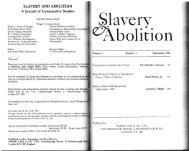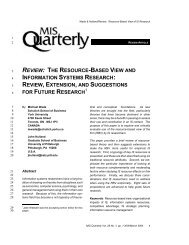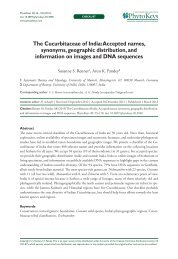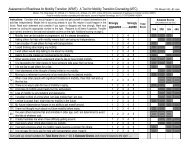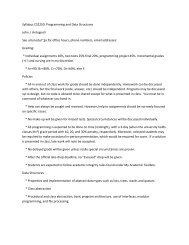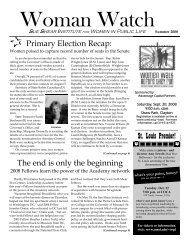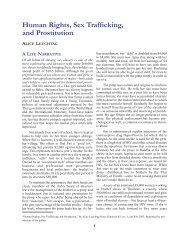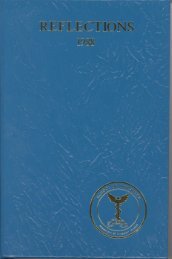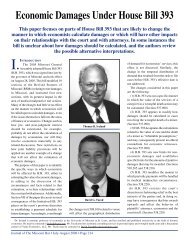The Price of Illicit Drugs: 1981 through the - The White House
The Price of Illicit Drugs: 1981 through the - The White House
The Price of Illicit Drugs: 1981 through the - The White House
You also want an ePaper? Increase the reach of your titles
YUMPU automatically turns print PDFs into web optimized ePapers that Google loves.
Corresponding predicted real prices per pure gram for this set <strong>of</strong> nominal expenditures were<br />
obtained by deflating and <strong>the</strong>n inverting <strong>the</strong>se predicted mean amounts. <strong>The</strong> average retail price<br />
(in 2000 dollars) for a given city and quarter was <strong>the</strong>n obtained as <strong>the</strong> weighted average <strong>of</strong> <strong>the</strong> set<br />
<strong>of</strong> 10 prices, with weights coming from <strong>the</strong> DUF-based cocaine and heroin price distributions<br />
described above. For a given quarter, <strong>the</strong> 30 city means were <strong>the</strong>n multiplied by <strong>the</strong>ir respective<br />
DAWN weights and <strong>the</strong> sum <strong>of</strong> <strong>the</strong>se contributions provided a weighted estimate for <strong>the</strong> mean<br />
price and mean purity in <strong>the</strong> U.S. for that quarter. <strong>The</strong> national results are show in Table 5 and<br />
Figures 2 and 5.<br />
5. A Model for Purity<br />
Given sufficient data, we could have estimated <strong>the</strong> mean purity for each city in each quarter by its<br />
sample mean. For a given quarter, a weighted average <strong>of</strong> <strong>the</strong>se 30 city (29 large U.S. cities and <strong>the</strong><br />
Rest <strong>of</strong> U.S.) sample means would have provided a sensible quarterly estimate for <strong>the</strong> mean purity<br />
in <strong>the</strong> U.S. for that quarter. However, given 30 cities and 78 quarters, this would require 2,340<br />
sample means for each level <strong>of</strong> distribution for each drug, and this requirement goes well beyond<br />
<strong>the</strong> resources <strong>of</strong> <strong>the</strong> STRIDE database. For each level <strong>of</strong> distribution for cocaine, Table A10<br />
contains <strong>the</strong> percentages <strong>of</strong> <strong>the</strong>se cell means that do not have data. This section describes a<br />
feasible alternative to simple tabulations.<br />
In order to estimate 2,340 cell means from a database containing less than 2,340 cells <strong>of</strong> data,<br />
some form <strong>of</strong> modeling is necessary. <strong>The</strong> linear model provides a straightforward possibility:<br />
E(purity itj ) = + city i + time t (3)<br />
V(purity itj ) = 2 (4)<br />
However, both <strong>of</strong> <strong>the</strong>se specifications are implausible for <strong>the</strong> purity data. First, <strong>the</strong> mean purity<br />
must lie in <strong>the</strong> unit interval, but (3) does not impose this restriction. Second, <strong>the</strong> variance <strong>of</strong> purity<br />
depends on its mean (it is higher around 0.5 than 0.9), but this is not embodied in (4). <strong>The</strong> first<br />
problem was particularly important for our data, as <strong>the</strong> linear model gave impossible estimates for<br />
purity for several cities in several quarters. We avoided both problems by working with a quasi-<br />
A-12





